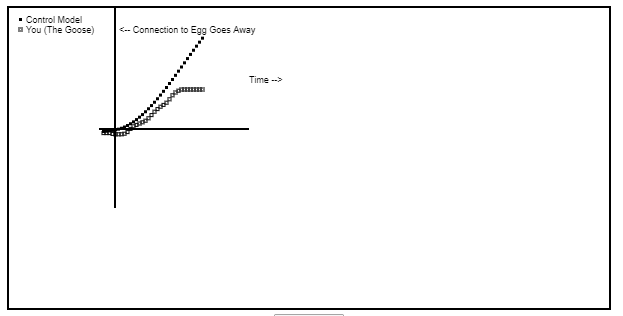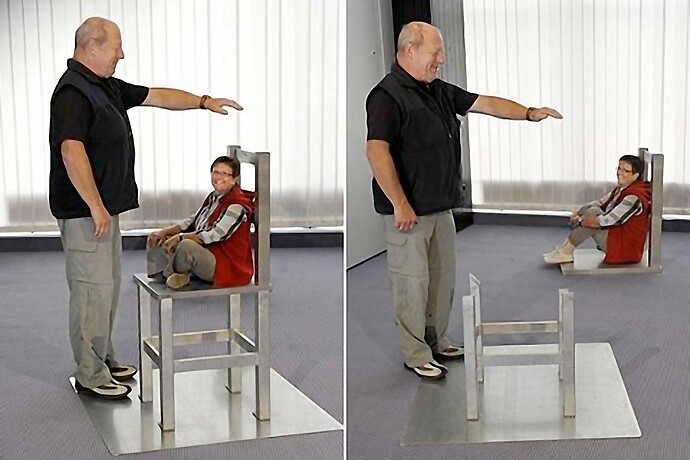[Martin Taylor 2017.08.18.16.20]
This isn't a response to any particular message, but a musing on
side-effects in the general scheme of things.
I start with a definition that I hope is non-controversial: A
side-effect of control is an effect that was not on the perception
being controlled.
There are wider usages of "side-effect" that don't involve control
at all, such as “The bow wave is a side-effect of the ship’s motion
through the water.” The ship’s motion is a cause, the bow-wave an
effect, but why would someone say it was a “side-effect”. I think
the reason is based in the speaker’s perception that it would make
no (or not much) difference to the ship’s progress if it could make
its way through the water without creating a bow wave.
But I'm not at the moment interested in this wider use of
“side-effect”, except to say that the side-effects of control have
the same quality of being irrelevant to the primary effect, while
being caused by whatever action produced the primary effect. An
observer cannot always tell what is a side-effect of the actions
involved in control, and what is a direct effect, either being a
direct cause of change in the perception being controlled or itself
being the controlled perception. Sometimes the observer can make a
pretty reliable guess, but not always.
For a historical example, consider the death of Thomas à Beckett,
Archbishop of Canterbury, who grew up as a great friend and
companion of the boy who became King Henry II. Henry appointed
Thomas as head of the Church in England, but was frustrated when
Thomas acted for the Church when the Church had interests that
conflicted with Henry’s. As the story goes, at a banquet (presumably
a rather drunken one), Henry exclaimed “Will no-one rid me of this
troublesome priest” or words to that effect, whereupon four knights
left the banquet and went to the Cathedral to murder Beckett. Now
was Beckett’s death a side-effect of Henry’s action or did Henry
control for Beckett to be dead? That was not determined in the 12th
century, and we can’t determine it now. But we can say that his
death was not a side-effect of the actions of the knights, who were
presumably controlling for pleasing the King by cleaving Thomas’s
skull.
One might presume that the subsequent excommunication of Henry by
the Pope was a side-effect for the knights, and for Henry, because
you would think none of them did what they did in order for this to
happen. I is not unreasonable to suppose that rival Kings (such as
the French) might have perceived England to be weak and to have
launched attacks on English domains in what is now France, which
would have been a rather large disturbance to Henry’s perceptions. I
don’t know my European history well enough to know whether they
actually did.
This little example illustrates several things, that one
controller’s side-effect can be another’s main effect, that actions
can have influences that last for a very long time, that an action
(by Henry) that causes a disturbance to another’s perception (the
knights), whose control action has side-effects that disturb others’
perceptions (the Pope, among many others) whose control actions
disturb the perceptions of the first actor. In other words,
side-effects can ripple through very extensive networks of
controllers and create feedback loops that are hard to follow or
whose existence would not easily have been predicted.
The example also shows that the notion of "side-effect" cannot be
considered in the abstract. You can’t always observe something
influencing something else and say definitively that the result was
or was not a side-effect of control. Maybe Henry deliberately said
what he did in order for Thomas to be killed.
Some times it's pretty obvious. Consider the power-law relation
between velocity and curvature that has been so contentious in
respect of whether it constitutes a behavioural illusion. Whether it
is a behavioural illusion or not, it is highly unlikely that any of
the controllers that have produced behaviour that conforms to it
were actually controlling for their velocity of movement to conform
to the power law. It was almost certainly a side-effect every time
it has been observed in an experiment, because it is very unlikely
that any of the actors was capable of perceiving the statistical
relationship between velocity and curvature. They were all
controlling some quite different perception.
If it is not possible to say in the abstract that something is a
side-effect, what else do we need if we are to make that assertion?
I think we need to look in the other direction, and go back to the
definition: “A side-effect of control is an effect that was not
on the perception being controlled.” I highlight the “not”, because
although to say something “is” X, that statement restricts the world
of possibility, whereas to say something “is not” X is to leave open
the possibility that it is anything else in the whole wide world.
It’s the difference between being confined in a prison cell and
being on the other side of the bars. So what we must, I think, say
is that a particular effect caused by a certain action is or is not
a side-effect of controlling a particular perception. Without
specifying the perception, at least as a category, to say something
is a side-effect is to make an unsupportable claim.
Consider the cries of an infant. Whatever their effect, those sound
waves are unlikely to directly influence the baby’s perceptions
other than the perception of the cry itself. But it might disturb a
perception of the baby’s comfort level in its mother, whose control
action might be to feed it. The cry would have been an action that
controlled the baby’s hunger perception, and the mother’s action in
feeding it would have controlled her perception of the baby’s level
of distress. It would be hard to say that either of these effects
are side-effects, though neither the baby’s nor the mother’s actions
directly influenced the actor’s perceptions. The effects they had
were on the actions of the other, but through the actions of the
other each controlled their own perception.
Side-effects seem easy in principle, but like so much else when you
look closely, they are not so easy in practice, at least not in the
real, complex world full of myriads of other controllers.
Just musing.
Martin

